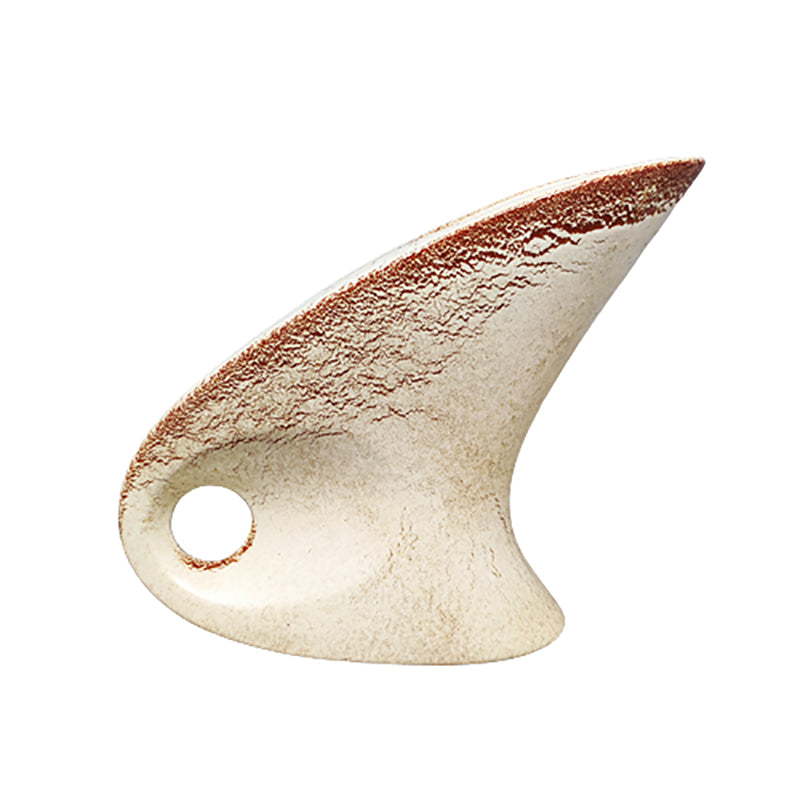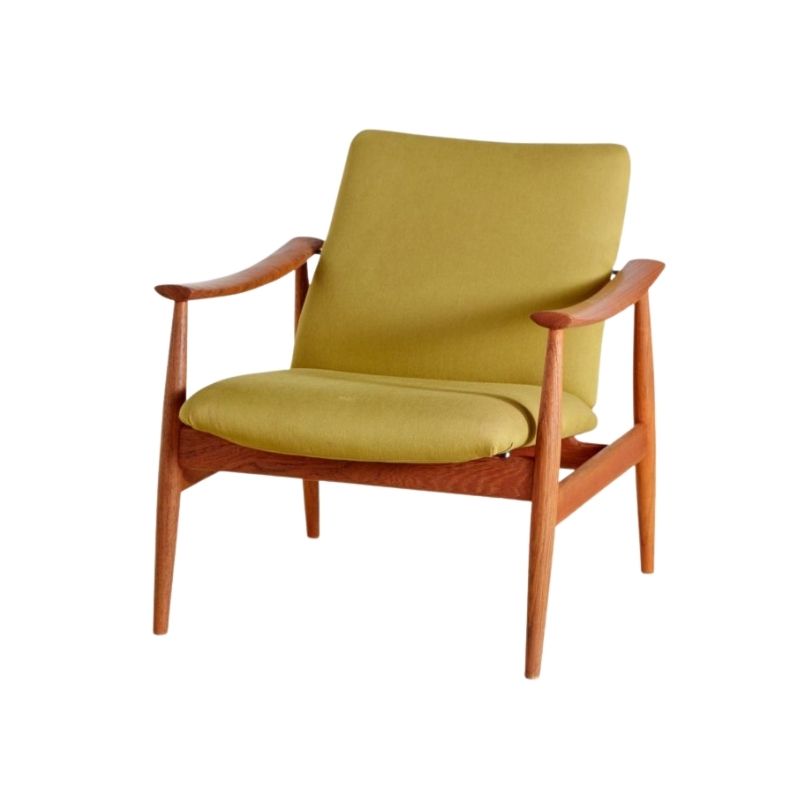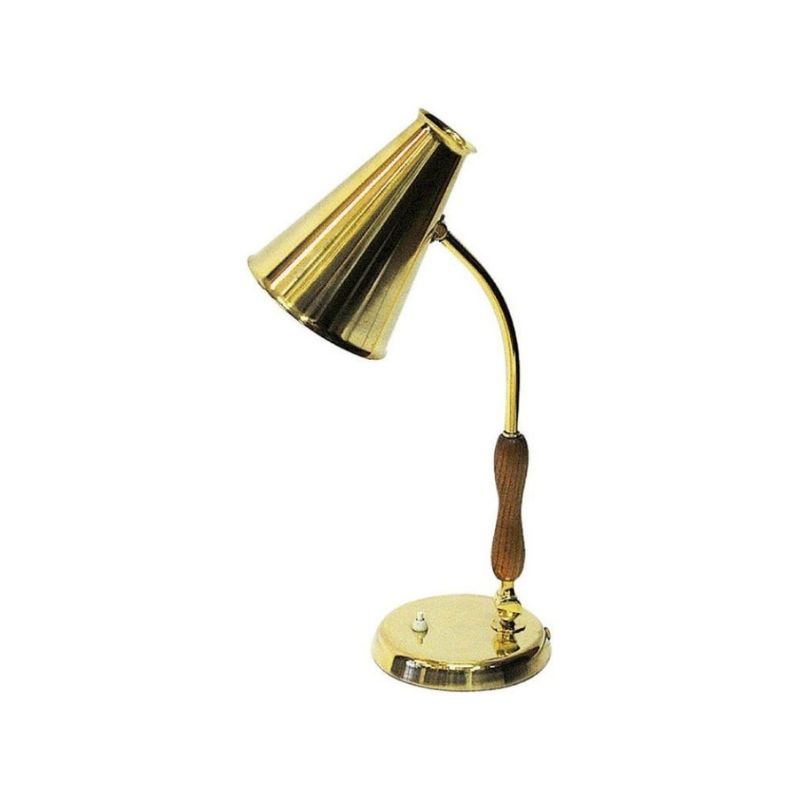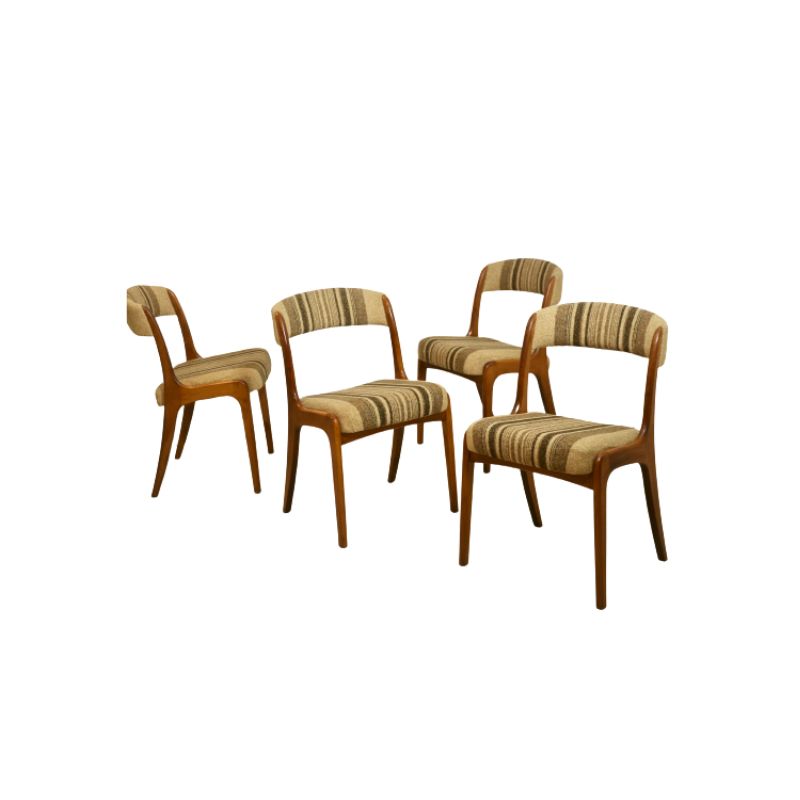Hi all,
I was given 4 of these chairs. They're in terrible shape, so they need to be stripped and rewoven.
The great thing is that they all have their JL Moller stickers so I'm really keen to get these restored and sold.
I have some questions though
- I've stripped one of them and while 97% of the old paint came right off, there is some residue that sits in the wood grain and I'm curious if I should strip it again or gently sand the chair to get rid of this?
- Would you say that this chair is the regular teak variety?
- I live in the Netherlands and I can't find Danish cording over here, unless it is in the UK and it's in GBP so I don't want to go that route. Does anyone know of other European distributors? Seems like it would be easiest to order from Denmark?
Thanks in advance,
S

They are solid teak of the normal variety (Tectona grandis), so sanding a bit won't hurt them. You will want to be careful not to round over the sharp edges and such. Probably you best bet is hand sanding. A wire brush can also be helpful to get paint out of the grain. It was black paint and teak has black stripes, so don't mistake them for paint. (Black is much better in this case than white paint). Teak also has white calcium deposits in the grain. I think I see a couple in your photo. They are often mistaken for white paint. Sometimes they are exposed by sanding. A citric acid wash will help get rid of them, but it will raise the grain. So if they are bothering you, do the citric acid wash before you have sanded them smooth, and you will not have to sand again for the raised grain.
Are the 2nd and 3rd photos "after" shots of 1st photo? If so, I think the finish looks good as is. Maybe some targeted wire brushing just a little, as leif noted.
It may be personal preference, but I like the look and feel of hand-worn wood over the course of a few decades. If you choose to sand the surface, you would indeed get more paint out, but you would also lose a lot of the hand-worn feel. And a few tiny specks of paint are always a good reminder of how you resurrected the life of that chair.
I had a set of those 78/62 chairs a couple of years ago. Very nice design, and my vote for Moller's best. If you wanted to save yourself some weaving hassle, you could also consider converting the seat to upholstery with elastic webbing support straps.
Watsonette, if your "after" photos show the results of only one application of stripper, then I'd say both your choice of stripper and your technique are very good. I'd recommend going ahead with another treatment with the same or a liquid version of your stripper and maybe scrub at the more visually annoying areas with a brush. Brass bristles might be a little too aggressive here, though. I've used cheap China (hog) bristle chip brushes with metal ferrules and wood handles for this. Just cut the bristles to short (+/- 20mm) length with scissors to make them stiffer scrubbers. Toothbrushes sometimes work well, too, if your stripper won't dissolve either the bristles or plastic handles.
Again, my compliments on your work. Welcome to the forum!
I don't know if I am allowed to post a commercial link so I won't, but there is a shop in Germany selling parts and supplies for MCM restoration. They do have danish cord and hook nails. I once bought some stuff from them and they were pretty helpful and reliable. Search for "design restoration spares".
Thanks all -
@ cdsilva: I actually forgot to take a before photo of the first chair that I stripped so I used a photo of another in the set with the black paint as a before shot. I think I will go in and tidy it up as you mentioned so it looks a little cleaner. Regarding your suggestion to consider using a seat instead of cording, I'd thought about it but since I won't keep them for myself I'd like to make as much as I can in selling them. That being said, I do find that with a wool seat they look more contemporary for today's interior trends. My major concern is: what are buyers looking for?
- But I love these chairs and I'd keep them if they fit my dining table. Unfortunately they are too low!
@ tktoo: Thank you for the compliments! I've only completed 1 piece (The ABCD chair which you've seen on this site) and these chairs are my second project so the positive feedback made me feel great! I'm going to apply another layer of stripper as you suggested and spot-tidy the last bits.
@ DrPoulet: Thank you! I found the site straight away.
I'm so pleased that I joined this forum it's been such a positive experience for me! I will post more photos as I progress with the project.Thanks all, again!
Update - I've just stripped the last of the 4 chairs. I don't know how I missed this but the last one is really damaged! (I got these chairs for free so I can't complain but I am very disappointed of course!)
It looks like the repairs were done with some kind of putty filler and maybe this is why they decided to varnish the chairs dark.
I'm planned to continue cleaning these up and cording them. Should I bother trying to repair the damage? I'm thinking a good colored wood filler would looks a lot better but is it worth it? In the end it's still damaged and it'll sell for less.


If the repaired joints seem structurally sound, I'd go ahead and smooth the contours of the fills, apply additional filler (toned ochre, if you wish) as needed, lightly sand and oil the frames, and let completely cure before touching up unsightly areas with artist's oils and a #000 brush using tiny strokes. If you don't like the results, wipe off with fingernail polish remover on a cotton swab and try again. It's sounds like a lot, but it's really not that much work and the chairs look much better in teak, IMO.
I've gone back in with stripper to remove the last bits of the old dark paint and something has happened to the wood! It has a "beached" look where ever I applied the stripper.
I tried to sand an area but that hasn't changed the appearance. Should I apply an even layer of stripper again or will this make the teak completely grey? I was also thinking of a de-greyer. Obviously I want to do the most straightforward thing that will fix the spots...
Further, would the suggestion be a light sanding, and leave whatever further imperfections remain in the grain of the wood?
Leaning a lot on these projects! 🙂


I've had that happen where stripper dripped onto an already-stripped area and sat for awhile before I noticed it. I think what may have happened is that the stripper leeched pigment out of the bare wood, though I'm not a refinishing expert by any means so it's just a guess.
I think stripper has to be applied evenly over the entire surface, even when all you need to do is a few small areas.
Sanding the entire surface should eventually get it down to where the wood is all the same color, but it will probably be a brighter, lighter teak because you will have removed the patina completely. The wood gets darker and richer on the surface with age and sanding will remove this. At least that's what I think will happen.
You can always add color back with a stain of some sort. I would use something really forgiving, something that can be feathered easily. Dye would be really tricky, at least in my opinion (and i've used it---still having flashbacks).
If you need any help, please contact us at – info@designaddict.com









